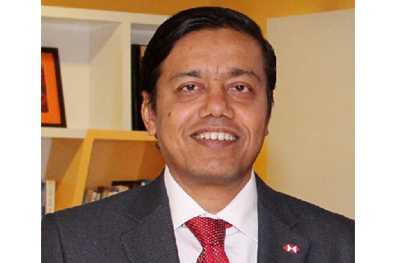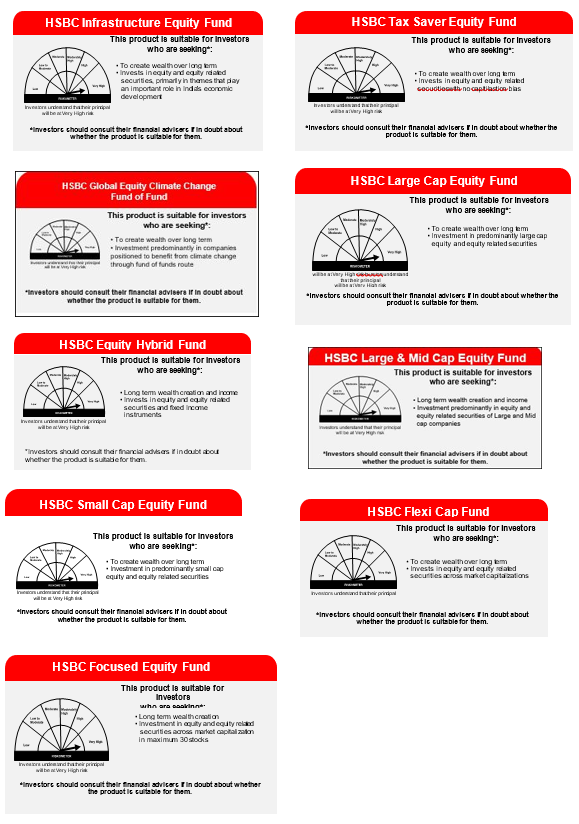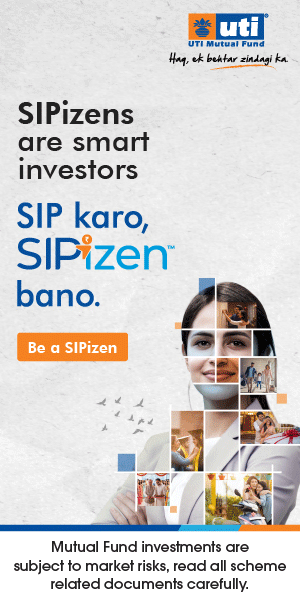We follow a bottom up approach along with a focus on earnings growth
BFSI Industry Interview

Neelotpal Sahai is currently Head of Equities since September 2017. He has been a Senior Vice President and Portfolio Manager in the Onshore India Equity team in Mumbai since 2013, when he joined HSBC. Neelotpal is responsible for managing three HSBC Mutual Fund equity funds. Neelotpal has been working in the industry since 1991. Previously, Neelotpal was Director at IDFC Asset Management Company Ltd in Mumbai, responsible for equity fund management, and held a variety of positions at Motilal Oswal Securities Ltd. in Mumbai, Infosys Technologies in Mumbai, Vickers Ballas Securities Ltd. in Mumbai, SBC Warburg in Mumbai, UTI Securities Ltd. in Mumbai and HCL HP Ltd. in Mumbai. Neelotpal holds a Bachelor’s degree in Engineering from IIT BHU – Varanasi and a Post-Graduate Diploma in Business Management from IIM Kolkata, both in India.
With the COVID second wave showing signs of waning and vaccination drive picking up after a slump of few weeks, what is your outlook on equity market and corporate earnings over the next few quarters?
Yes, it has been a rapid journey from despair to hope and finally to a state of optimism now. Just a month back, we were at the peak of uncertainty related to the second wave with rapid rise in new case load and fatalities. However, the scenario has changed meaningfully in the past couple of weeks with countrywide peak in new case load already visible. This should result in unlocking / reopening process to begin in 1QFY22 itself, limiting the impact of lockdowns on corporate earnings unlike in the first wave. The 4QFY21 earnings season has been in-line with expectations so far but interestingly despite the concerns around the second wave, the earnings (i.e. for Nifty) have seen upgrades for FY22. We however see high probability of earnings downgrades in the 1QFY22 results due to the impact of the lockdown during the quarter. However, we would not be concerned, as this going to be a temporary impact and not a structural one. We reckon that the earnings will again be reset higher, once the reopening and recovery phase set in (similar to what we saw in FY21). We believe that there will be strong earnings rebound starting 2QFY22 for the remainder of FY22 fuelled by the favourable base, economic recovery, accelerating exports and stable consumption. We see earnings growth momentum to sustain in high-teens beyond FY22 on the back of economy witnessing a cyclical recovery due to revival in capex cycle over the next 2-3 years (first by the government followed by private capex).
The Union Budget of 2021 was hailed as one of the best from a growth perspective in recent times. How much impact do you think COVID second wave will have on the Budget objectives, especially on divestments (privatization), and Government spending on infrastructure and other sectors?
This is a valid concern. However, despite the COVID disruption, the fiscal data that has come out so far has been comforting. In the pandemic hit FY21, the tax revenues actually exceeded government estimates by 7%. Even with a 3% contraction in nominal GDP last fiscal, the tax revenues grew 1% YoY. That is impressive and suggest tax buoyancy. We can definitely take comfort from the trends seen in FY21 to extrapolate it to FY22 and the economic impact of the second wave is not anywhere as severe as the first wave. We believe that there is some conservatism in built in to the budget estimates, which should provide buffer case of short fall from any revenue sources (i.e. overprovision for subsidies in FY21 can be utilised, achievable budgeted tax revenue growth of 9.5% in FY22 etc.). Moreover, government has some headroom to borrow more as well. The disinvestment target of Rs. 1.75 trillion is steep but generally the momentum on this activity picks in the second half and we need to monitor how this will pan out in FY22. So we do not see risk of any meaningful changes in the path of multi-year expansionary fiscal policy envisaged in the budget document.
Do you expect to see taper tantrum in the financial markets, when the US Fed starts to taper off its very accommodative monetary policy?
This is indeed a risk for equity markets but we see the accommodative stance from US Federal Reserve and other DM Central banks to continue for the foreseeable future. This is because, Central banks including the US Federal Reserve remain committed to supporting the recovery and they cannot afford to take the pedal off mid-way. US has seen a good recovery on the back of the fiscal support and an accommodative monetary policy. A decision to taper hence could derail this process as the US is still in the path of economic restoration phase after the second wave. The US Federal Reserve's policy framework also implies its willingness to look through higher inflation in the short term and delay policy take-off for now. So we see a lower probability of tapering of asset purchase this year and envisage a lower-for-even longer interest rate environment.
What are the global and domestic market risk factors in the near term?
For equity markets, a sustained spike in interest rates globally and specifically in the US would be a key risk factor. This combined with other factors could lead to stimulus measures being withdrawn earlier or resulting in lack of add-on stimulus, bring in an addition risk dimension. Sustained rise in global commodity prices (including crude oil) will another factor to monitor.
Domestically, the risk of another COVID wave and vaccine supply / production issues impacting pace of inoculation are aspects to be kept in mind. Other aspect to keep in mind is the human cost of the second wave and its impact on demand. Markets have largely ignored this angle and unlike first wave, the human cost is much higher this time around. Additionally, there could be a risk of an extended economic impact of COVID, forcing government to reallocate resources for social sector, deviating from the commitment to reviving investments (we see very low probability of this playing out though).
After being volatile in the last couple of months (March and April), Nifty is back to its all time high. How are you approaching stock selection in these market conditions?
Two aspects are highlighted in this question viz market volatility and current market level, which imply valuations. Near term volatility should not be of concern for equity investors with a medium to long term view. In fact, such instances provide buying opportunities in the interim through short spurts of correction, due to fear or sentimental factors (fear of the second wave in the current context) and those instances can be utilized to add to conviction bets in the portfolio from a medium to long term perspective. From a valuation stand point, yes, markets are trending above historical averages on traditional valuation metrics, however if we look in the context of multi-year earnings growth visibility markets appear more reasonable. Market movements are dictated by surprises (both positive and negative to what is already priced in), while the lack of it may mean a range bound performance owing to absence of triggers. We follow a bottom up approach along with a focus on earnings growth. Within that there is an emphasis on names that can surprise positively on earnings growth. This, we believe would be the right way to approach stock selection in the current environment.
Which industry sectors in your view are expected to see faster earnings growth recovery over the next 1 – 2 years? Which sectors are you bullish on from a 3 year investment horizon perspective?
We see interest sensitives (Financials, Auto & Real Estate) and domestic cyclicals (Industrials & Cement) to lead the way on the earnings growth momentum over the next 1-2 years. Exporters (Pharma, Technology & Chemicals) are expected to show steady growth. Cyclical recovery, pick-up in capex and strong global demand (driving exporters) are the key factors that would contribute to the earnings growth. We expect sectors who are driving the earnings growth to outperform and as a result our order of preference is rate sensitivities followed by domestic cyclicals and exporters.
Which HSBC MF equity schemes will you advise investors with 3 to 5 year horizon to invest in? Please explain briefly, why?
Asset class and fund recommendations depend upon the individual client scenarios with respect to existing asset allocation, risk appetite of the investor, investment horizon among others. Within equity asset class too, the existing allocation across various fund categories in individual client scenarios is a key factor that will determine the selection of funds / categories. Financial advisers are better equipped to take the allocation call, given the understanding of their client's asset allocation requirement, risk appetite and investment horizon.
At HSBC we have equity funds spanning across the risk profile. These funds are available across categories - starting with the HSBC Hybrid Equity Fund (under aggressive hybrid category), large cap fund (HSBC Large Cap Equity Fund), HSBC Flexi Cap Equity Fund, HSBC Small Cap Equity Fund, HSBC Large & Midcap Equity Fund, HSBC Focused Equity Fund and Infrastructure thematic fund (HSBC Infrastructure Equity Fund). We also have HSBC Tax Saver Equity Fund which falls in the ELSS category of schemes. Amongst the fund of funds investing in overseas schemes, we have recently launched HSBC Global Equity Climate Change fund of fund.
Mutual fund investments are subject to market risks, read all scheme-related documents carefully.

Note on Risk-o-meters: Please note that the above risk-o-meter is as per the product labelling of the scheme available as on the date of this communication/ disclosure. As per SEBI circular dated October 05, 2020 on product labelling (as amended from time to time), risk-o-meter will be calculated on a monthly basis based on the risk value of the scheme portfolio based on the methodology specified by SEBI in the above stated circular. The AMC shall disclose the risk-o-meter along with portfolio disclosure for all their schemes on their respective website and on AMFI website within 10 days from the close of each month. Any change in risk-o-meter shall be communicated by way of Notice cum Addendum and by way of an e-mail or SMS to unitholders of that particular scheme.
Recent Interviews
-
Partner Connect by Advisorkhoj with Mr Amit Kalra Glorious Path Pvt Ltd New Delhi
Dec 5, 2025
-
Partner Connect by Advisorkhoj with Mr Alok Dubey PrimeWealth Pune
Dec 1, 2025
-
In Conversation by Advisorkhoj with Ms Aparna Shanker Chief Investment Officer Equity The Wealth Company Mutual Fund
Nov 28, 2025
-
In Conversation by Advisorkhoj with Mr Sanjay Bembalkar Head Equity Union MF
Nov 28, 2025
-
In Conversation by Advisorkhoj with Mr Arjun Khanna Equity Fund Manager Kotak Mutual Fund
Nov 17, 2025
Fund News
-
Motilal Oswal Mutual Fund launches Motilal Oswal Diversified Equity Flexicap Passive Fund of Funds
Jan 2, 2026 by Advisorkhoj Team
-
Mr. Navneet Munot's 'Person of the Year 2025'
Dec 31, 2025 by HDFC Mutual Fund
-
Zerodha Mutual Fund launches Zerodha Nifty Short Duration G Sec Index Fund
Dec 26, 2025 by Advisorkhoj Team
-
Groww Mutual Fund launches Groww Nifty Chemicals ETF
Dec 26, 2025 by Advisorkhoj Team
-
DSP Mutual Fund launches DSP Nifty Next 50 ETF
Dec 19, 2025 by Advisorkhoj Team





